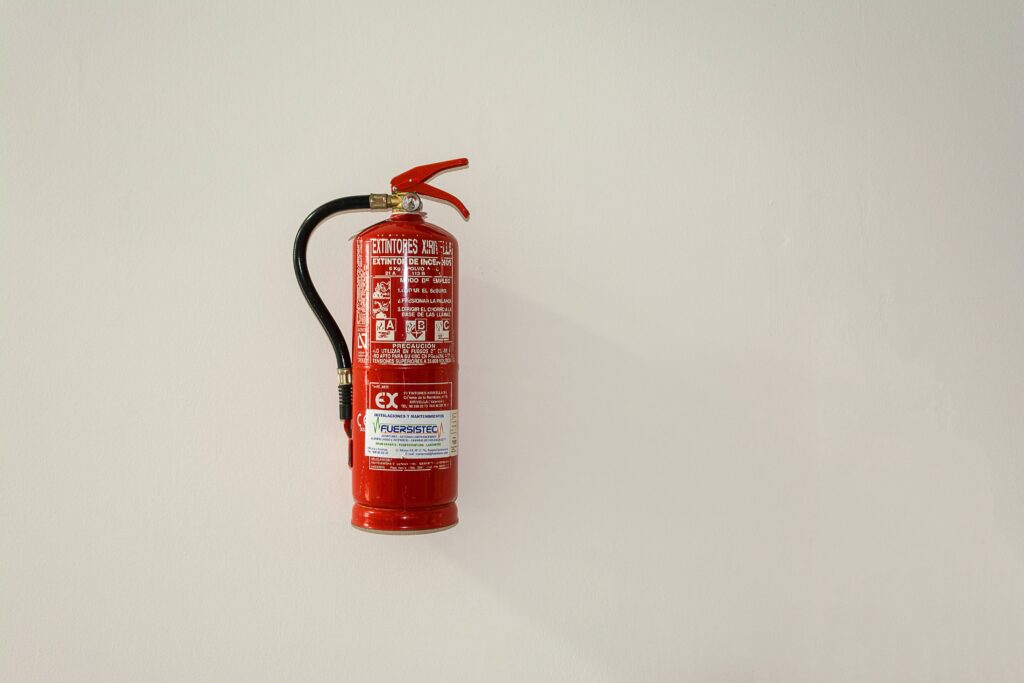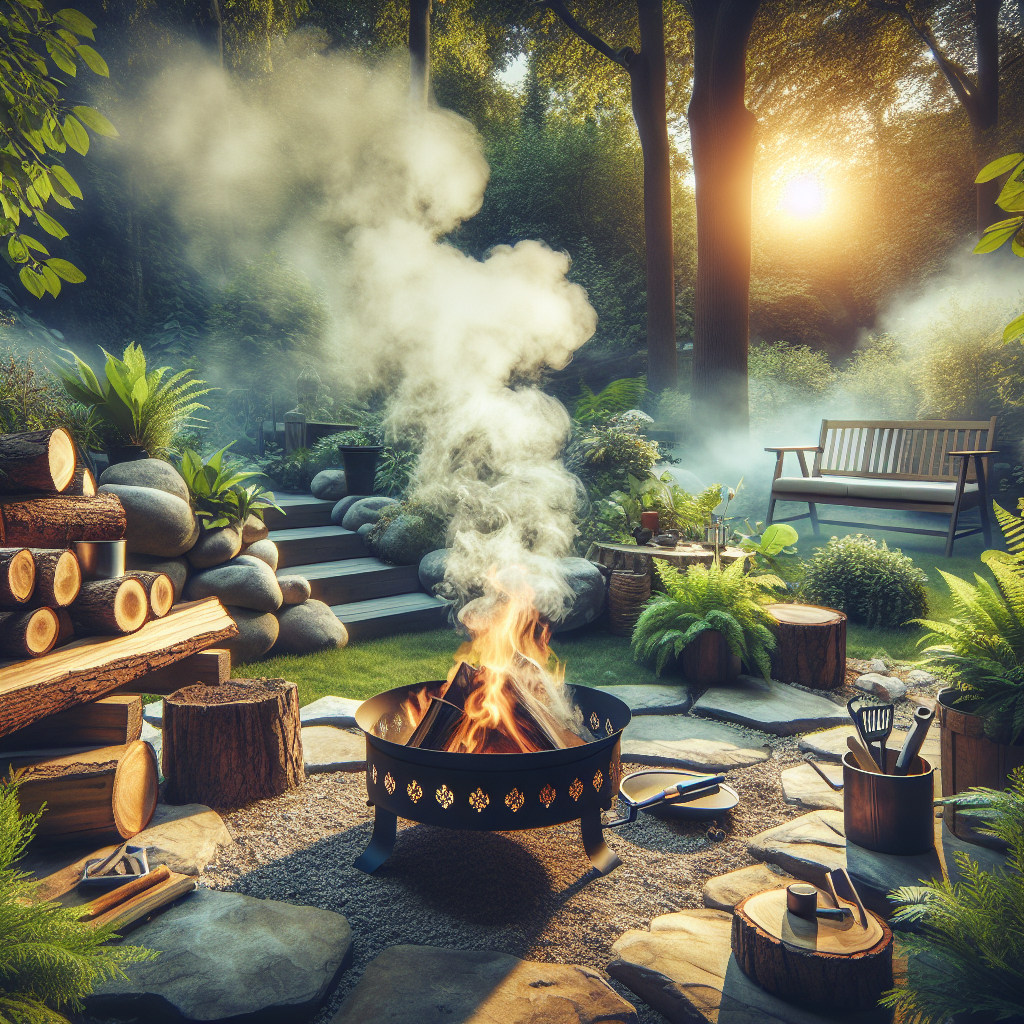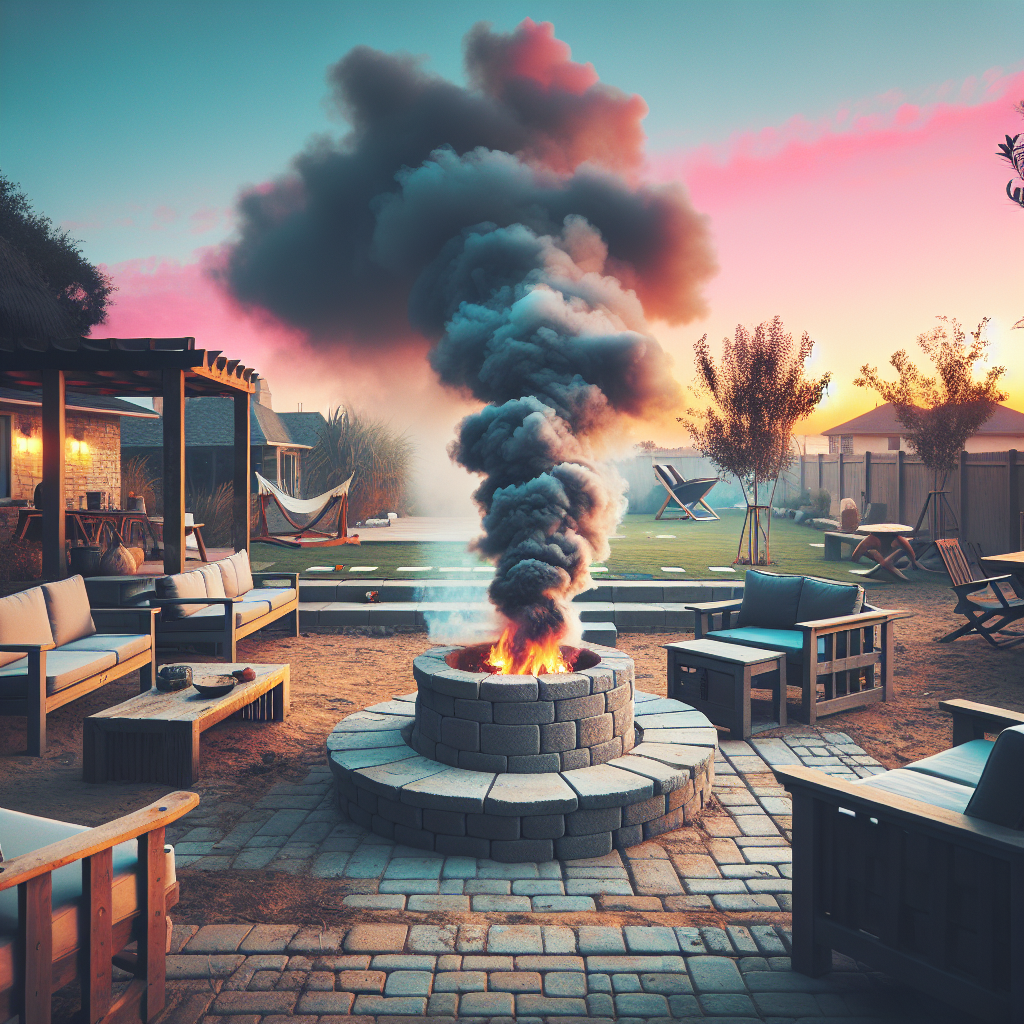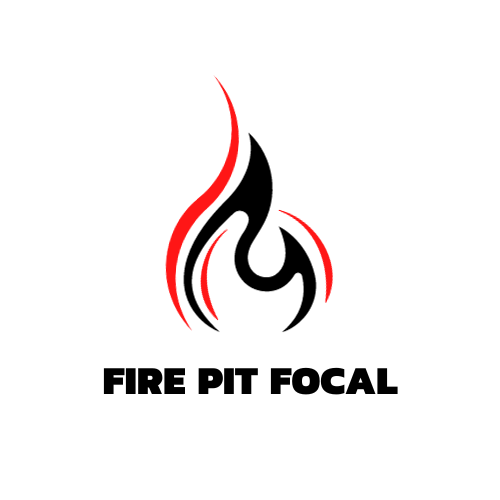Picture this: you and your friends gathered around a crackling fire pit, enjoying the warm flames and the cozy atmosphere. But suddenly, thick smoke starts billowing out, engulfing the entire area and choking everyone in its path. Panic sets in. What on earth should you do? In this article, we’ll explore the possible reasons behind your fire pit’s excessive smoking and offer some practical tips to help you regain control and enjoy your outdoor fire pit experience to the fullest.
Check for Obstructions
Examine the Firewood
When your fire pit is smoking excessively, one of the first things you should do is examine the firewood that you are using. Make sure the firewood is dry and properly seasoned. Wet or green wood tends to produce more smoke as it contains higher moisture content. Look for firewood that has been properly seasoned for at least six months to a year, as this will ensure a cleaner burn with less smoke.
Clean the Fire Pit
Another possible reason for excessive smoke is a dirty fire pit. Over time, ashes, debris, and other residues can accumulate in the fire pit, obstructing proper airflow and causing more smoke. To remedy this, clean out the fire pit by removing all ashes and debris. Use a brush or broom to sweep away any loose debris, and consider scrubbing the fire pit surface to remove any built-up soot or grime. This will help improve the airflow and reduce smoke production.
Inspect the Chimney or Vent
If you have a fire pit with a chimney or vent system, it’s important to inspect them for any obstructions. Creosote buildup, bird nests, or other debris can block the chimney or vent, leading to excessive smoke. Make sure to clean the chimney or vent regularly to prevent these obstructions. If you notice any signs of blockage, it’s recommended to contact a professional chimney sweep to safely remove the obstruction and ensure proper ventilation.
Adjust Air Flow
Open the Air Vents
One way to reduce excessive smoke is to adjust the air vents on your fire pit. Most fire pits have adjustable air vents that can help regulate the airflow, which in turn affects the amount of smoke produced. By opening the air vents, you allow more oxygen to enter the fire pit, promoting a cleaner and more complete combustion process. Experiment with different levels of air vent openings to find the right balance that minimizes smoke production.
Remove Wind Blockers
If you have wind blockers around your fire pit, such as screens or walls, they may be contributing to the excessive smoke. These wind blockers can restrict the flow of air and prevent proper ventilation, causing the smoke to linger around the fire pit. Consider removing or adjusting the wind blockers to allow for better air circulation and reduce smoke buildup.
Clean or Replace the Air Intake
The air intake is an important component of a fire pit as it provides fresh air for combustion. If the air intake is clogged or damaged, it can hinder proper air circulation and increase smoke production. Check the air intake for any blockages, such as dirt or debris, and clean it thoroughly. If the air intake is damaged, consider replacing it to ensure optimal air flow and reduce smoke output.

Use Dry Firewood
Choose Properly Seasoned Firewood
Using properly seasoned firewood is crucial in minimizing smoke production. Seasoned firewood has had enough time to dry out, resulting in a lower moisture content. This allows for a cleaner and more efficient burn, reducing the amount of smoke emitted. Look for firewood that is dry, lightweight, and has visible cracks on the ends. Avoid using freshly cut or green wood, as it contains a higher moisture content and will produce more smoke.
Avoid Wet or Green Wood
As mentioned earlier, wet or green wood should be avoided as much as possible. Wet wood not only produces excessive smoke but also contributes to creosote buildup in the fire pit and chimney, which can be a fire hazard. Green wood, which refers to freshly cut or unseasoned wood, contains a high moisture content and will produce more smoke when burned. Always ensure your firewood is dry and properly seasoned before using it in your fire pit.
Prevent Moisture Buildup
To ensure the firewood remains dry and ready for use, it’s essential to store it properly. Moisture buildup can occur if firewood is left exposed to rain, snow, or high humidity. Opt for a covered storage area or use a firewood rack that keeps the wood off the ground and protected from the elements. By preventing moisture buildup, you can ensure your firewood remains dry and ready to use, resulting in less smoke when burned.
Improve Ventilation
Create a Windbreak
If your fire pit is located in an area with strong winds, creating a windbreak can help reduce excessive smoke. Winds can disrupt proper air circulation, leading to more smoke production. Consider placing a physical barrier, such as a fence or natural windbreak, around the fire pit to shield it from strong gusts. This will help maintain a steady airflow and minimize the amount of smoke that is blown back into the seating area.
Position the Fire Pit Correctly
The positioning of your fire pit can also impact smoke production. When setting up your fire pit, make sure it is positioned in an open area with good ventilation. Avoid placing it near structures, trees, or anything that can obstruct air flow. Additionally, consider the prevailing wind direction in your location and position the fire pit accordingly. By placing the fire pit in an optimal location, you can improve ventilation and reduce smoke.
Consider Using a Fire Pit Screen
Using a fire pit screen can help improve ventilation and reduce smoke. A fire pit screen acts as a barrier, preventing embers and sparks from escaping while still allowing air to pass through. This helps maintain proper airflow and reduces the chances of excessive smoke. Look for a fire pit screen that fits securely over your fire pit and ensures adequate ventilation while providing safety.

Check Fuel Type
Avoid Using Accelerants
Using accelerants, such as gasoline or lighter fluid, to start your fire pit may seem convenient, but it can lead to excessive smoke and even dangerous flare-ups. Accelerants can produce volatile fumes and can be difficult to control, resulting in an uncontrolled and smoky fire. Instead, opt for safer and more environmentally friendly fire starters, such as natural kindling, newspaper, or fire starter logs, to ignite your fire pit.
Use Appropriate Fire Pit Fuels
choosing the right fuel for your fire pit is essential in minimizing smoke production. Different types of fire pits may require specific fuels, such as wood, charcoal, or gas. Make sure to use the appropriate fuel recommended by the manufacturer for your specific fire pit model. Using the wrong fuel can lead to improper combustion, increased smoke, and potential damage to your fire pit.
Inspect Propane or Gas Connections
If you have a propane or gas fire pit, it’s crucial to regularly inspect the connections for any leaks or damage. Leaks in gas connections can lead to incomplete combustion and excessive smoke. Before each use, check for any signs of damage, such as cracks, corrosion, or loose connections. If you suspect a gas leak, immediately turn off the fuel source and seek professional assistance to fix the issue.
Extinguish and Restart
Burning Materials Fully Extinguished
When you are finished using your fire pit, it’s important to ensure that all the burning materials are fully extinguished. Use a shovel or fire poker to spread out the remaining embers and ashes, allowing them to cool down. Avoid leaving any hot or smoldering materials unattended, as they can continue to produce smoke. By ensuring everything is fully extinguished, you can prevent unnecessary smoke and potential fire hazards.
Allow the Fire Pit to Cool
Before attempting to restart your fire pit, make sure to allow it to cool completely. Touch the fire pit surface to ensure it has cooled down to a safe temperature. Attempting to relight a fire pit that is still hot can lead to excessive smoke and can be dangerous. Give your fire pit enough time to cool down before proceeding with the next fire.
Properly Restart the Fire Pit
When you are ready to relight your fire pit, follow the proper restarting procedures. Remove any remaining ash or debris from the previous fire and ensure the fire pit is clean. Use appropriate fire starters, such as kindling or fire starter logs, to ignite the fire. Avoid using excessive amounts of fuel or accelerants, as they can lead to excessive smoke. Allow the fire to establish properly and maintain steady airflow to minimize smoke production.

Consider Environmental Factors
Assess Wind Conditions
Before using your fire pit, take into consideration the current wind conditions. Strong winds can cause excessive smoke and make it difficult to control your fire. If the wind is too strong, it may be best to postpone using the fire pit until the conditions improve. Always prioritize safety and choose moments when the wind is calmer to ensure a pleasant and smoke-free experience.
Avoid Using in Rain or Snow
Using a fire pit in wet conditions, such as rain or snow, can lead to excessive smoke and even extinguish the fire. Moisture on the firewood or in the fire pit can hinder proper combustion and produce more smoke. Additionally, the risk of accidental flare-ups or splattering sparks increases in wet conditions. It’s best to avoid using your fire pit in rainy or snowy weather and wait for drier conditions for a more enjoyable and smoke-free experience.
Elevate the Fire Pit
If your fire pit is placed directly on the ground, it may be more prone to producing excessive smoke due to poor airflow. Elevating the fire pit on a fire pit stand or placing it on bricks or pavers can help improve ventilation and reduce smoke. By raising the fire pit, you create space for air to circulate underneath, allowing for better combustion and reduced smoke production.
Clean the Fire Pit
Remove Ashes and Debris
Regularly cleaning out ashes and debris from your fire pit is essential in maintaining proper airflow. After each use, make sure to remove any remaining ashes and debris using a fire shovel or brush. Dispose of the ashes in a designated fire-resistant container and clean out any loose debris that may have accumulated. This will prevent obstructions and ensure optimal airflow, reducing smoke production.
Clear Clogged Air Holes
Over time, the air holes in your fire pit can become clogged with ash or debris, restricting proper ventilation and resulting in more smoke. Inspect the air holes and use a small stick or wire to clear any obstructions. Clear air holes will allow for a better oxygen supply, improving combustion efficiency and reducing smoke output.
Scrub the Fire Pit Surface
While not directly related to smoke production, scrubbing the surface of your fire pit can help maintain its overall performance. Built-up soot, grime, and residue can hamper proper airflow and contribute to the excessive smoke. Use a wire brush or a suitable non-abrasive cleaner to scrub the fire pit surface, removing any stubborn stains or residue. A clean fire pit will not only look more aesthetically pleasing but will also function better, ensuring a more enjoyable fire experience with minimal smoke.

Consult the User Manual
Refer to Manufacturer Guidelines
If you are experiencing excessive smoke or have any concerns about your fire pit, it’s always best to consult the user manual provided by the manufacturer. The user manual will contain specific guidelines and recommendations for operating and maintaining your fire pit. It may provide additional troubleshooting tips for addressing smoke issues that are specific to your fire pit model. Following the manufacturer’s guidelines will help ensure the safe and optimal use of your fire pit.
Follow Recommended Safety Procedures
When using a fire pit, it’s important to prioritize safety. The user manual will outline the recommended safety procedures and precautions that you should follow. This may include guidelines on where to position the fire pit, proper storage of fuel, and safety measures to prevent accidents and injuries. By adhering to the recommended safety procedures, you can enjoy your fire pit without compromising the well-being of yourself and others.
Contact Customer Support if Necessary
If you have followed the troubleshooting tips provided in the user manual and are still experiencing excessive smoke, it may be necessary to contact the customer support of the fire pit manufacturer. They can provide further assistance, answer any questions you may have, and offer specific solutions tailored to your situation. Customer support should be able to address any technical issues and guide you towards resolving the excessive smoke problem effectively.
Seek Professional Assistance
Contact a Certified Technician
If you have tried all the troubleshooting steps and are still unable to resolve the excessive smoke issue, it may be time to contact a certified technician. A certified technician will have the expertise and knowledge to diagnose and fix any underlying issues with your fire pit. They can inspect the various components, such as the ventilation system, gas connections, or any other potential causes of excessive smoke. Seeking professional help ensures that the problem is addressed correctly and safely.
Seek Help from a Fire Pit Expert
In some cases, seeking help from a fire pit expert, such as a fireplace specialist or a chimney sweep, may be beneficial. These professionals specialize in fire-related appliances and can provide valuable insights and recommendations. They can inspect the overall setup of your fire pit, check the chimney or ventilation system, and advise on modifications or improvements that can help reduce excessive smoke. Consulting a fire pit expert will ensure a thorough assessment of your setup, leading to a more effective solution.
Obtain Professional Consultation
If you are considering investing in a new fire pit or are dealing with persistent smoke issues that are not easily resolved, obtaining professional consultation can provide valuable guidance. A professional fire pit consultant or designer can assess your specific needs, review your outdoor space, and recommend the most suitable fire pit options for your situation. They can provide expert advice on selecting the right type of fire pit, ensuring proper installation, and minimizing smoke production based on your preferences and requirements.
By following these comprehensive guidelines, you can effectively address excessive smoke issues in your fire pit. Remember to prioritize safety, proper maintenance, and optimal combustion to enjoy a smoke-free and enjoyable fire pit experience.



